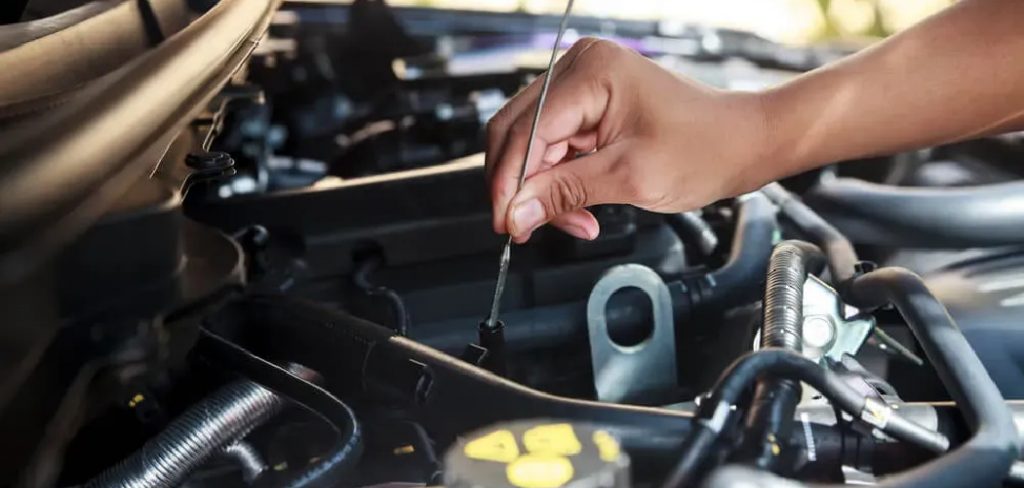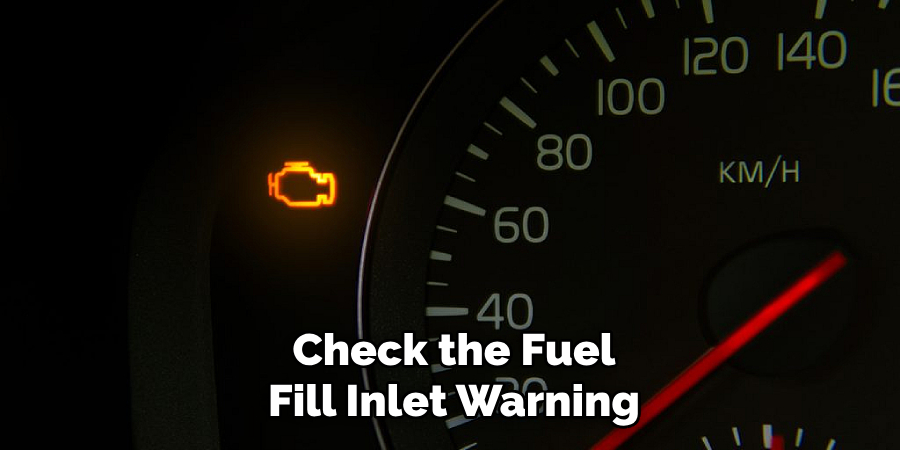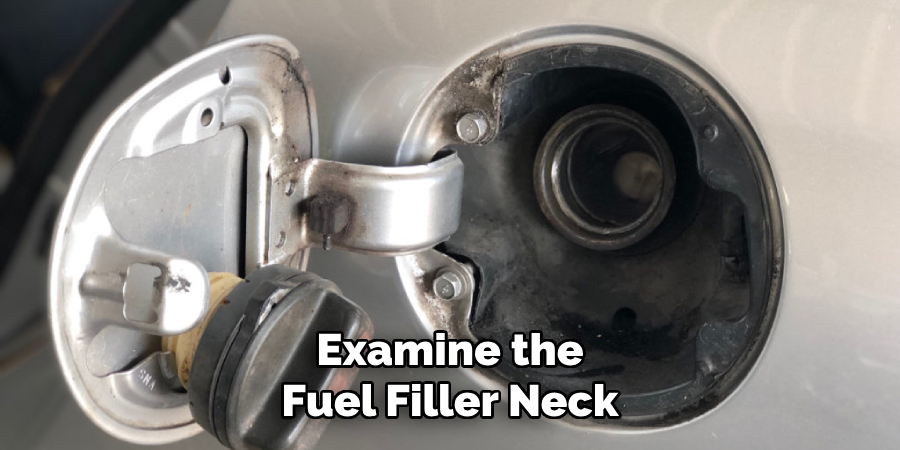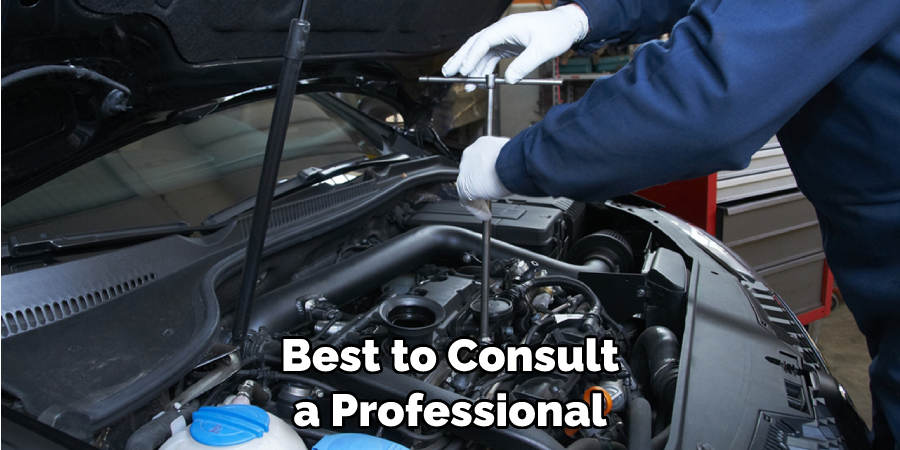A “Check Fuel Fill Inlet” warning can be an annoying and puzzling issue for drivers, but it’s a common message that often arises due to simple problems.

This notification typically indicates that there’s a problem with the fuel system being unable to maintain the correct pressure. Common causes include a loose or improperly seated gas cap, blockage in the inlet tube, or a malfunction in the vehicle’s evaporative emissions system.
Understanding the potential sources of this warning can help you diagnose and fix the problem quickly, ensuring your vehicle runs smoothly and efficiently.
This guide will walk you through how to fix check fuel fill inlet, helping to diminish the likelihood of fuel system problems and allowing you to get back on the road with peace of mind.
Importance of Addressing the Issue
Addressing the “Check Fuel Fill Inlet” warning promptly is crucial for several reasons. First and foremost, it ensures the integrity of your vehicle’s fuel system, which plays a vital role in your car’s operation.
Ignoring the issue can lead to fuel system malfunctions, potentially causing engine performance problems, reduced fuel efficiency, and increased emissions.
Furthermore, a consistent warning light may mask other, more severe issues that could arise without being noticed. By taking swift action to resolve this warning, you can help prevent costly repairs and maintain your vehicle’s health.
Additionally, regular maintenance and addressing minor issues promptly can extend the lifespan of your vehicle, offering safety and reliability on the road.
What is the Fuel Fill Inlet?
The fuel fill inlet is a critical component of your vehicle’s fuel system, essentially serving as the entry point for gasoline into your car’s fuel tank. It is the part of the car where you insert the gas pump nozzle during refueling.
Typically located behind the fuel door, the inlet connects to the fuel tank via a filler neck and is designed to allow fuel to flow into the tank while preventing fuel vapor from escaping into the atmosphere.
Modern vehicles are equipped with a capless fuel fill inlet, which includes a sealing mechanism to maintain the fuel system’s pressure and reduce emissions.
This design innovation offers the convenience of not having to remove a gas cap during refueling, but it also requires careful maintenance to ensure proper function and to avoid triggering warning lights, such as the “Check Fuel Fill Inlet” notification.
10 Methods How to Fix Check Fuel Fill Inlet
1. Understand What “Check Fuel Fill Inlet” Means

The “Check Fuel Fill Inlet” warning typically appears on the dashboard of vehicles that have a capless fuel filler system. This system eliminates the need for a traditional fuel cap, making fueling quicker and more convenient.
However, like any system, it can encounter issues that trigger the warning. This message indicates that something is obstructing or preventing the fuel inlet from sealing properly, which can lead to problems like fuel vapors escaping and potentially triggering an emissions-related warning.
Understanding this system is the first step toward resolving the issue effectively. The capless design relies on internal mechanisms to seal the fuel inlet, so when the message appears, it’s important to check for any possible causes.
2. Inspect the Fuel Fill Inlet for Visible Debris
The most common cause of the “Check Fuel Fill Inlet” warning is debris or foreign objects stuck inside the fuel inlet. This could be anything from dust, dirt, leaves, or even small rocks that prevent the system from sealing correctly.
Begin by visually inspecting the fuel fill inlet to see if there is any debris obstructing the mechanism. If you notice dirt or other particles, carefully remove them using a clean cloth or soft brush.
Be gentle to avoid damaging the delicate sealing mechanism inside the inlet. This simple cleaning may often resolve the issue and clear the warning.
3. Clean the Fuel Fill Inlet with Compressed Air
Sometimes, small particles that are hard to see or reach may be lodged inside the fuel fill inlet. In this case, using compressed air can help dislodge and remove any debris. Point the nozzle of the air canister into the inlet and blow air gently to remove dirt or small objects.
This method works well for dislodging particles that could be causing the warning message without requiring you to manually clean out the inlet. Make sure to keep a safe distance when using compressed air and avoid applying too much pressure, as this could damage the internal components.
4. Check the Sealing Mechanism

If cleaning out the debris doesn’t resolve the issue, it’s time to inspect the sealing mechanism within the capless fuel inlet. The system relies on a spring-loaded door or flaps that should close tightly after fueling to prevent vapors from escaping.
If this mechanism becomes stuck or damaged, it can trigger the “Check Fuel Fill Inlet” warning. Use a flashlight to inspect the flaps inside the fuel inlet for any signs of damage, corrosion, or improper alignment.
If the sealing mechanism is visibly damaged or not functioning properly, it may need to be repaired or replaced to restore the proper seal.
5. Reset the Warning Light
Sometimes, even after resolving the issue, the “Check Fuel Fill Inlet” warning may not disappear immediately. In many vehicles, the system needs to be reset manually or by driving for a certain distance.
After cleaning the inlet and ensuring everything is functioning correctly, start the vehicle and drive it for a few miles. This can give the car’s computer time to recheck the fuel system and clear the warning.
If the warning persists, you may need to reset the system using an OBD-II scanner, which allows you to clear any stored trouble codes related to the fuel inlet.
6. Inspect the Evaporative Emissions (EVAP) System
The fuel fill inlet warning is often linked to the vehicle’s evaporative emissions (EVAP) system, which is responsible for preventing fuel vapors from escaping into the atmosphere.
A malfunction in the EVAP system, such as a faulty valve or pressure sensor, can trigger the warning. If cleaning the inlet and resetting the system doesn’t work, you may need to inspect the EVAP system for any problems.
Use an OBD-II scanner to check for error codes related to the EVAP system. Common issues include leaks in the system or malfunctioning components that prevent the proper sealing of fuel vapors.
7. Check for Fuel Leaks Around the Inlet
In some cases, the “Check Fuel Fill Inlet” warning may appear if there is a fuel leak near the inlet or filler neck. This can cause a loss of pressure in the fuel system, triggering the warning.
To check for leaks, visually inspect the area around the fuel fill inlet and under the vehicle for any signs of fuel drips or puddles. If you detect a fuel leak, it’s important to address it immediately, as this can be a serious safety hazard.
Tighten any loose fittings or hoses, and if the leak persists, consult a mechanic to have it professionally repaired.
8. Examine the Fuel Filler Neck for Damage

The fuel filler neck, which connects the fuel fill inlet to the fuel tank, can sometimes become damaged or cracked. This can lead to an improper seal and trigger the warning light.
Visually inspect the filler neck for any signs of wear, corrosion, or physical damage. If you find any cracks or signs of deterioration, you may need to replace the fuel filler neck.
A damaged filler neck can cause not only the warning light to appear but also affect fuel efficiency and lead to further emissions problems if not addressed promptly.
9. Replace the Fuel Fill Inlet Components if Necessary
If the issue persists after attempting the above methods, you may need to replace certain components of the fuel fill inlet system. Depending on your vehicle, this could include replacing the fuel fill inlet flap, the sealing mechanism, or even the entire capless fuel filler assembly.
These parts can wear out over time or become damaged by frequent use or exposure to the elements. Replacing them will restore the proper functionality of the fuel inlet system and clear the “Check Fuel Fill Inlet” warning.
10. Consult a Professional Mechanic
If you’ve tried all the DIY methods and the “Check Fuel Fill Inlet” warning remains, it’s time to consult a professional mechanic. There may be underlying issues with your vehicle’s fuel system or electronics that are beyond basic troubleshooting.
A trained mechanic can perform a comprehensive diagnostic test to identify any deeper problems, such as faulty sensors, leaks in the EVAP system, or electrical malfunctions.
They can also perform more complex repairs, such as replacing fuel system components or recalibrating the vehicle’s computer.

Conclusion
Addressing a “Check Fuel Fill Inlet” warning can seem daunting, but by following a systematic approach, it is possible to identify and resolve the underlying causes.
The steps outlined—from cleaning debris and inspecting the sealing mechanism to checking the EVAP system and fuel filler neck—provide a comprehensive guide for troubleshooting this common vehicle issue.
Thanks for reading, and we hope this has given you some inspiration on how to fix check fuel fill inlet!
